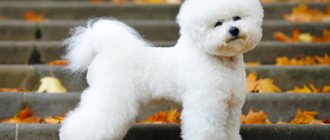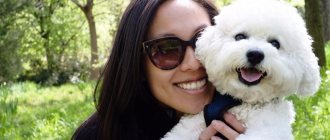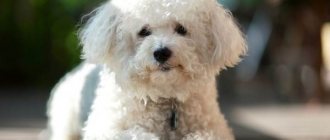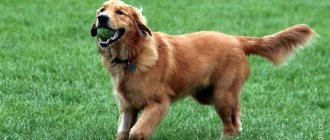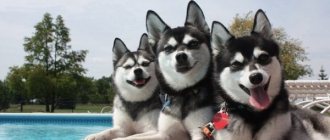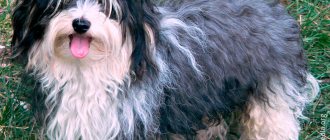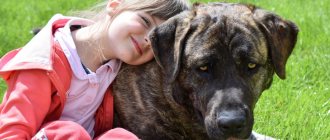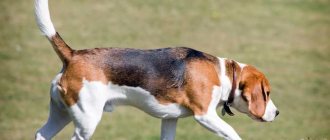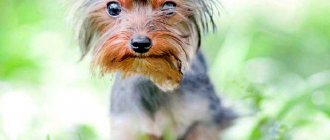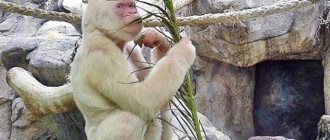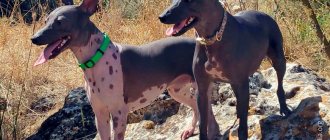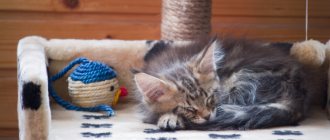Similar to plush toys, small dogs of the Bichon Frize breed are very popular: they are happily kept as companions, exhibitions are held for them, where the best representatives parade. The beloved Bichon Frize, whose photos adorn the albums, are full members of the family for all owners. These are amazingly kind and sweet dogs that respond with love to care for them.
History of the Bichon Frize breed
Bichon Frize
The past of French lap dogs, if not covered in mystery and darkness, is thoroughly confused. According to experts, the distant ancestors of the Bichon Frize were small white dogs, which in turn were descendants of water barbets. Curly-haired fluffy creatures inhabited the coast and islands of the Mediterranean Sea and were very successful in catching rats, for which they were often settled on ships. The first name of the breed sounded like “Bar Bichon”. "Bar", short for "barbet", and "bichon" are French for "velvet cushion".
Over time, the genus of white dogs with curly hair has grown significantly, as a result of which such branches as the Bolognese (Italian lapdog), Maltese (Maltese lapdog) and the Tenerife Bichon have branched off from it. The latter variety was especially popular among the European elite during the Renaissance and, in fact, gave rise to the modern breed of French lapdogs.
By the 13th century, bichons acquired the status of a luxury item. A French lapdog puppy could be presented as an exclusive gift, or used as hard currency when concluding a deal. Francis I contributed to the special popularization of the breed. The Knight King kept at his court an innumerable number of lap dogs, to which in those days a new nickname was stuck: “infanta dogs.”
After the French Revolution, interest in Bichons gradually faded away. From the palace chambers, the dogs quickly moved to the Parisian streets, from where they migrated to traveling circus troupes. The official name “Bichon Frize” was given to the breed by the International Canine Association in 1933. A year later, general standards for the appearance of French lap dogs were formulated. As for the spread of the breed, the favorites of Francis I reached the United States only in the 50s of the last century, and in England, Bichons began to be bred only in the mid-70s.
I love lying on the grass so much!
Two bichon friends, one wet, one dry
Origin story
Bichons should not jump from high obstacles as there is a risk of injury.
The historical homeland of the Bichon Frize is considered to be Tenerife, one of the Canary Islands belonging to Spain: the first written records of Barbichons, small dogs with white curly hair, living here date back to the 13th century. Barbichons came to mainland Europe thanks to navigation. Despite their miniature size, the dogs coped well with rodents and reliably protected ship holds from rats, without taking up much space in the rooms below deck.
In the 15th century, having arrived at the court of the French king as a cute souvenir, the animals became extremely popular among the nobility. But these dogs became a real fashion trend during the reign of Henry III (1575 – 1589). The ruler never, even at the most important meetings, parted with his favorite Barbichons. Representatives of the aristocracy, imitating the ruler and demonstrating loyal feelings, considered it their duty to acquire such a living accessory: the snow-white fluffy fur coat of the dogs harmonized so well with the exquisite lace of rich outfits. At the same time, the original name of the breed was shortened to “Bichon”, and the word “Frise” (curly, curled) indicated the peculiarities of the texture of the dog’s coat.
The triumphant march of Bichons across Europe as pets of the privileged nobility continued until the 17th century. The emerging wave of bourgeois revolutions, changing the social meaning of the nobility, also influenced the noble status of animals. We forgot about charming decorative dogs for a while. Only after the 1st World War did individuals begin to gain popularity again. The International Canine Federation officially registered the breed in 1933, and a year later its standard was formulated.
Appearance of Bichon Frize
Bichon frize puppy
It is difficult to find a more endearing creature than the French lapdog. Drowning in their airy “fur coats”, they resemble weightless white clouds, while the miniature dimensions of the animals give them a resemblance to a soft wind-up toy. Like the vast majority of representatives of the indoor and decorative breed, Bichon Frizes have an inexhaustible supply of charm. The size of an adult individual usually does not exceed 30 cm, and its weight is 3-5 kg.
Head
Proportional, with a flat skull shape (the fluffy fur of the animal gives the head a rounded appearance) and the same flat cheekbones. The nose is round, with black skin. Muzzle with a wide base, gradually tapering towards the nose. The transition from the frontal part to the muzzle is not clearly expressed.
Lips
Thin, black. When the mouth is closed, the lower lip is usually not visible.
Jaws
Bichon Frize with his beloved owner
The ideal parameter is a scissor bite, but some felinological associations also allow a straight bite. The jaws are wide, with even incisors.
Eyes
Round black (sometimes brown), located in a straight line, the whites are not visible. The skin around the eyes is pigmented black, emphasizing the contrast between the light coat and the organs of vision.
Ears
The Bichon Frize has drooping ears, repeating the shape of an isosceles triangle. The exemplary length when extended is to the corners of the lips. Covered with long, wavy hair.
Neck
Long (1/3 of the length of the entire body), set high, thin at the base of the skull and gradually thickening as it approaches the withers.
Bichon Frize muzzle
Body
Compact in size, with a strong, level back and a wide, slightly curved loin. The chest is of moderate width, deeply dropped, with a pronounced sternum.
Limbs
Who's the good boy here? I!
Distinctive features of the forelimbs are thin bones. Legs straight, elbows pointing back. The shoulders are oblique, not protruding. The hind legs are level, with a muscular and wide thigh. The shape of the paws is round, with elastic black pads and toes gathered into a “ball”.
Tail
The Bichon Frize's tail is abundantly covered with lush hair, located significantly lower than the back and equal to half the length of the body. Doesn't stop. An animal experiencing positive emotions raises its tail up and holds it parallel to its spine. In this case, the guard hair (dewlap) can come into contact with the back, but the tail itself does not.
Wool
Curly, airy, not prone to bunching into so-called “cords”, 7 to 10 cm long. The undercoat is thick, dense and springy. An animal caught in the rain usually does not get wet, since due to the thickness of the undercoat, moisture does not penetrate deep into the “coat”. The cleanly washed coat of a Bichon Frize is more voluminous, so after taking a bath and drying, the animal turns into a tightly knit “dandelion”. To give the silhouette some completeness, Bichons are usually cut.
Color
Adults are snow-white in color, but puppies may have a beige or yellowish undertone to their coat, which disappears as they grow older. According to standards, areas of fur with a yellowish tint should occupy no more than 10% of the surface of the puppy’s body.
Vices
Bichon Frize at an exhibition
The list of the most common defects in the Bichon Frize includes:
- coat pigmentation (red and black spots);
- coat that is too short, straight or bunched up into “cords”;
- malocclusion (overbite or underbite).
The main disqualifying defects of show-class animals:
- pink colored nose;
- a tail twisted into a “steering wheel” or in a spiral;
- light shade of the iris;
- cryptorchidism;
- aggressive and, on the contrary, too cowardly character.
What to name a dog
The choice of a name for a puppy directly depends on the imagination and attitude of the owner
When deciding on a nickname for your pet, you can use your own imagination, refer to the list of names of dogs that are stars or those belonging to famous people, but in any case, the choice must correspond to the appearance, character, and temperament of the Bichon Frize. In addition, the name should be easily perceived by the pet itself and be harmonious. Animal psychologists recommend choosing short nicknames for small dogs, consisting of one or two syllables.
Names for Bichon Frize boys
For perky, active, cheerful Bichon boys, for example, the following names are suitable:
- Archie;
- Barney;
- Bailey;
- Belchik;
- Bimbo;
- Mickey;
- Pixie;
- Snoopy;
- Stan;
- Fido.
Nicknames for girls
Charming, affectionate, playful pets of the Bichon Frize breed can be called as follows:
- Iris;
- Asta;
- Squirrel;
- Blanca;
- Waldi;
- Vita;
- Gina;
- Zhuzha;
- Button;
- Kerry;
- Katie;
- Lulu;
- Myra;
- Rina;
- Snowball;
- Sadie;
- Susie.
Photo of Bichon Frize
Personality of the Bichon Frize
Who are you?
I want to play with you! French lapdogs are real little “energizers” who never sit still for a minute. These are extremely friendly, active and funny creatures that easily take root in both spacious houses and small apartments. Bichons are very sociable and will be happy to live with families, which will give them the opportunity to involve as many people as possible in their games.
Because of their friendly nature and immense charm, French lap dogs are often attracted to pet therapy. The cute snow-white lumps are frequent guests in children's hospitals and nursing homes. In addition, these decorative dogs make reliable watchdogs. Bichon frizes have a ringing voice, which they use with pleasure every time an unfamiliar creature appears on the threshold of the apartment.
Bichon Frize with a child
Bichon Frize with a cat
The character of these dogs
The Bichon Frize has a complex character. But these are quite obedient dogs that are easy to train. They are very active, cheerful and playful. Despite their small size, Bichons are brave and resilient. They do not like to sit still, they are very inquisitive, and will bravely defend their owner from any threat with loud barking. These dogs have gained popularity as a pet due to their good-natured disposition and easy-going behavior. They are not at all aggressive, affectionate, and become attached to all family members. They are suitable even for inexperienced owners, easily adapt to any conditions, and take root even in a small apartment. But those who are rarely at home should not get Bichons. These dogs cannot stand loneliness; out of boredom and longing for their owner, they can display destructive behavior, chewing things, shoes, and furniture.
Bichon Frizes are capable of reading human emotions. Therefore, they are often used for canistherapy. These dogs visit hospitals, nursing homes, and help children with developmental disabilities. They are sociable and try to make people laugh. They prefer to be among a large number of people. They especially love children and support all pranks and fun games. A Bichon will never hurt a child, even if it accidentally hurts them. These dogs are very peaceful, do not enter into conflicts and get along with all pets. They are friendly to strangers and love guests. But they react adequately to aggression. If something threatens them or family members, they will bark and may bite. They will always warn the owners by voice that someone has approached the door. We can highlight the following character traits of the Bichon Frize that they inherited from their ancestors:
- energy;
- cheerfulness;
- playfulness;
- communication skills;
- curiosity;
- goodwill;
- intelligence;
- obedience;
- devotion.
Education and training
The Bichon Frize dog is easy to train. These are very smart pets and easily learn even complex commands. Therefore, they often perform in the circus, participate in shows and dog sports. But in order to teach them something serious, you will have to work hard and be patient. These pets have a flighty character, they cannot concentrate for long and quickly lose interest in activities. Another feature of Bichons is that they do not tolerate rough treatment. You cannot scream, much less hit your pet. During training, you need to be affectionate, but persistent. It is better to use treats as encouragement. For disobedience, you can scold in a stern voice.
Decorative dogs do not need to be trained, but they must be taught simple commands: “come to me”, “place”, “no”, “stay”. It is also necessary to socialize the pet so that it reacts normally to noise from the street, cars, strangers, and other dogs. You need to raise a puppy from the first days of his appearance in the house. You need to immediately make it clear that he is not the boss in the house. You should not spoil your baby or allow him liberties. It is necessary to prohibit biting, barking frequently, and gnawing things. All family members must follow the rules of dog behavior in the house. An ill-trained lap dog will become capricious and uncontrollable. But the good thing is that Bichon Frizes are not prone to dominance and are not touchy.
Education and training
Bichon frize walks with owner
Training French lap dogs is not that difficult. Miniature dogs easily learn not only elementary, but also quite complex commands, which is why Bichons can often be found in the circus arena. It is better to start training animals from an early age, but this should be done taking into account the characteristics of the breed. The simplest commands like “Ugh!”, “Place!”, “Come to me!” Bichon Frize puppies learn quickly, but developing more complex skills will take a little longer.
When playing with people, puppies, and even adult dogs, often take such liberties as biting. To minimize the risk of accidental injury, the animal should be weaned from this habit as early as possible.
French lapdogs have a somewhat flighty character and do not like to concentrate on one activity for a long time. They quickly get bored with long and monotonous lessons, which cannot be said about pranks and mischievous tricks.
Bichons categorically do not accept rough treatment or threatening shouts, so using force during training and forcing the animal to carry out commands “under pressure” is obviously a failed idea. Ideally, raising a dog should be based on its interest in the learning process.
Trying to put yourself on the same level as an animal is also not worth it. The Bichon must understand that he is not the boss in the house, but the owner. Otherwise, there is a risk of getting a spoiled and uncontrollable pet.
When training Bichon Frizes, you should be patient and have all sorts of goodies, which will become an additional incentive for the animal to learn. Behave with your dog affectionately but firmly, carrying out exercises in a relaxed playful manner with the obligatory encouragement of the pet at the end of the process. If the animal behaved badly during training, you can “read a lecture” to it in a stern tone (not to be confused with shouting).
Owners who want to involve their pet in volunteer activities are advised to find a canine therapy training program for their four-legged friend. Completing such courses will provide the dog and its owner with the opportunity to participate in pet therapy activities.
Bichon in a warm jacket
This kid is clearly unhappy about something.
Pros and cons of the breed
Bichon Frize are toy dogs that make ideal indoor pets. It is believed that they are suitable for any person, both adults and children. In fact, before you bring a Bichon into your home, you need to think carefully about whether you can give him enough attention. After all, such a gentle dog will suffer from loneliness, lack of love and affection. To make the right decision, you should familiarize yourself with the main pros and cons of this breed.
Advantages:
1. Ideal for apartment living. 2. Friendly, cheerful disposition. 3. Beautiful appearance. 4. Unique coat. 5. The ideal companion dog. 6. Loves children. 7. Ability to perform circus tricks. 8. Easy to learn.
Care and maintenance
Clipped Bichon Frize
The Bichon Frize is not a breed you can afford to be a little lazy with. Despite the fact that French lap dogs practically do not shed, their lush coat requires careful care. It is necessary to comb the animal every day (preferably after walks, to remove debris and grains of sand entangled in the fur), and also use a slicker brush to make the “fur coat” airier.
If a pet comes from the street, its paws, face and genitals are usually washed. French lap dogs are supposed to be bathed once a month. When washing, be sure to use a mild shampoo and conditioner to make the coat easier to comb. It is advisable to visit a groomer once every 2-3 months. However, if you are not raising a show-class animal, you can save a little on grooming and cut the animal’s hair yourself.
The Bichon Frize's eyes should be checked every day and, if necessary, cleaned with a cotton swab dipped in cool, boiled water. The same rule applies to keeping your ears clean. Bichons' nails are trimmed twice a month with a nail clipper or tweezers. The unevenness of the claw plate formed after the procedure is filed down. Teeth and mouth should be cleaned using special toothpaste at least once a week.
Feeding
Feeding your French lapdog with natural products, preferring a combined feeding option or limiting yourself to dry food is a question that each owner decides in his own way. Among the obligatory “dishes” that must be present in the diet of a “dandelion dog”, it is worth mentioning raw meat (to soften the product, you can lightly pour boiling water over it), boiled and raw vegetables, sea fish, from which the seeds have been previously removed, brewed buckwheat and oatmeal cereals Since adult Bichon Frizes are fed twice a day, it is better to give them meat with their evening meal and in thoroughly chopped form (it is very desirable that it is not pork).
Kus
Including milk in the Bichon menu is permissible only for puppies. For adults, a small amount of any fermented milk drink once a week is enough. It is highly not recommended to treat your pet with fatty, spicy and salty delicacies. Sweets, sausage, pastries, pasta, legumes and potatoes are also strictly prohibited, not to mention meat and chicken bones.
Individuals on natural feeding are advised to take vitamin complexes. Be sure to make sure that these are not preparations based on carrot and algae extracts, which are usually brightly pigmented and can noticeably change the color of your pet’s coat.
French lapdog puppies are fed 5-6 times a day. As the dog gets older, the frequency of feedings decreases, and by 9 months the animal completely switches to “adult” meals twice a day.
Toilet
Playful bichon
Bichon Frizes are quite active in resisting such science as using the outdoor toilet. At first, take your pet for walks more often: puppies - every half hour, adults - once every 2 hours. This way he will form a clear associative series: walk - toilet.
The optimal time for walking a Bichon for the purpose of toileting is considered to be the time after the dog has eaten (after 10-15 minutes). For particularly stubborn “comrades” who categorically do not want to use going outside to perform their needs and prefer to dirty the floor and carpet, another compromise can be found. In such cases, the dog is taught to walk on a newspaper or disposable diaper spread on the floor (the method is not suitable for males).
Cell
Playful and restless lap dogs can create an epic mess in the apartment, so sometimes Bichon owners have to resort to the services of a crate. This is an extreme but effective measure, designed for cases when there is no one to look after the pet. It is necessary to accustom a dog to a crate from an early age so that the animal does not view this restriction of freedom as a type of punishment.
Nutrition
You can feed him with a special balanced food (100 g per day), natural food and only hypoallergenic meat (rabbit, turkey). Raw meat should be cut into small pieces and scalded with boiling water. Raw food is also recommended for consumption: cereals, vegetables, meat, fish. You need to feed twice a day, chop large pieces. If feeding dry food, it is necessary to ensure constant access to clean drinking water.
You should carefully consider the choice of diet, as improper nutrition can cause allergies. Calcium and other mineral supplements prescribed by your veterinarian should be given with food.
You should be careful when choosing your Bichon's diet.
The main thing: do not let your dog eat from the table.
Attention! Choose natural foods without dyes. Otherwise, tears may flow from the eyes and leave red marks on the face.
Bichon Frize Health
The average life expectancy of French lap dogs is 12-15 years. With proper care, some individuals can live up to 19 years, while most animals die not from incurable diseases, but from old age. Genetic diseases are almost never found among Bichon Frizes. The most commonly diagnosed diseases of the breed include:
Someone got a little dirty
- hypotrichosis;
- dermatitis;
- epilepsy;
- axial instability;
- urolithiasis disease;
- allergy;
- eye diseases: cataracts, entropion, corneal dystrophy;
- diabetes.
In some individuals, deformation of the tear ducts occurs, the signs of which are excessive tearfulness of the animal, or a complete absence of tear secretions (the second type of pathology can be corrected by surgery). In addition, Bichon Frizes exhibit increased sensitivity to vaccinations, so if after vaccination you notice changes in the animal’s behavior and allergic skin rashes, it is better to immediately contact a veterinarian.
Where to buy and price
The average cost of representatives of the breed is 60,000 rubles. Puppies offered for a noticeably low price should arouse suspicion. There is a risk of purchasing a non-purebred pet; dogs without documents can also be cheaper. The following nurseries enjoy a good reputation: Cameloia Bloom, Snow White Lamb, Cherche la Neige Renard.
If the owner can devote time to the dog and is attracted by the appearance of the charming Bichon Frize, he should definitely get a puppy. This white, fluffy little ball will surprise you with its devotion, love of life, and a host of other positive qualities.
How to choose a puppy
Mom with three Bichon Frize puppies
The main difficulty when choosing a Bichon Frize puppy is the lack of clear characteristics of the breed in young individuals. Often, under the guise of a French lap dog, you can buy an ordinary white fluffy dog that has nothing to do with this branch. If your goal is to acquire a standard show-class animal, not to mention representatives of the breed variety, it is worth involving an experienced specialist in this matter.
When meeting your future pet, immediately reject overly nervous, aggressive and cowardly individuals. It is unlikely that their character will improve with age. Otherwise, follow the same rules as when choosing any purebred animal. Get to know the living conditions of the dogs in the kennel, do not hesitate to ask the breeder to introduce you to the puppy’s parents, carefully study the veterinary passport of the future pet. But you shouldn’t pay attention to the Bichon’s weight and disproportionate head: during the process of growth, the animal very quickly gains muscle mass, and the shape of the skull gradually evens out.
The optimal age for Bichon Frize puppies for sale is 3-3.5 months.
Nicknames
A charming dog needs a beautiful and sonorous name. When choosing a nickname for your pet, you need to take into account the dog’s appearance, character traits, as well as its French origin.
The name should be easy to pronounce and appeal to both the owner and the puppy.
Nicknames for the male:
- Amur.
- Orleans.
- Jacques.
- Archie.
- Smiley.
- Umka.
- Snowball.
- Barney.
- Persian.
- Fluff.
- Henry.
- Nike.
- Oscar.
- White.
- Dobie.
- Gray.
- Loyd.
- Riley.
- Casper.
- Luke.
- Rich.
- Bond.
- Zach.
- Wooddy.
- Plato.
- Clark.
Nicknames for bitches:
- Susie.
- Snowflake.
- Sophie.
- Roxy.
- Jesse.
- Gabi.
- Pushinka.
- Sherry.
- Salma.
- Dana.
- Poly.
- Lilu.
- Daisy.
- Helga.
- Tracey.
- Busya.
- Nancy.
- Shelley.
- Pixie.
Choosing a nickname is a fun activity for the whole family. People of both the older generation and kids can dream up how to name a pet.
